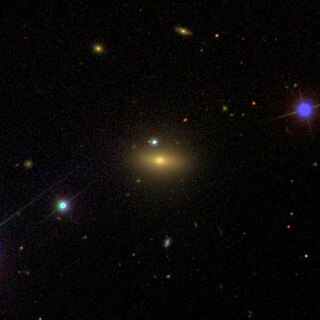
NGC 5886 is an +14 magnitude elliptical galaxy in the constellation Boötes. It was originally discovered by John Herschel in 1828 with an 18.7 inches (470 mm) reflector.

NGC 12 is an intermediate spiral galaxy in the Pisces constellation. It was discovered by William Herschel on December 6, 1790.

NGC 31 is a spiral galaxy located in the constellation Phoenix. It was discovered on October 28, 1834 by the astronomer John Herschel. Its morphological type is SB(rs)cd, meaning that it is a late-type barred spiral galaxy.

NGC 4780 is an intermediate spiral galaxy within the constellation Virgo. It is located about 166 million light-years away from the Sun. It was discovered in 1880 by the astronomer Wilhelm Tempel.
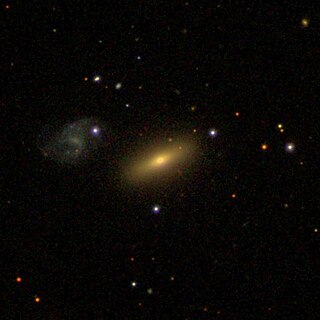
NGC 42 is a lenticular galaxy in the Pegasus constellation. It was discovered on October 30, 1864, by the German astronomer Albert Marth. It may be gravitationally interacting with the nearby NGC 41.

NGC 1728 is a spiral galaxy in the constellation Eridanus. The galaxy is listed in the New General Catalogue. It was discovered on November 10, 1885 by the astronomer Edward Emerson Barnard.
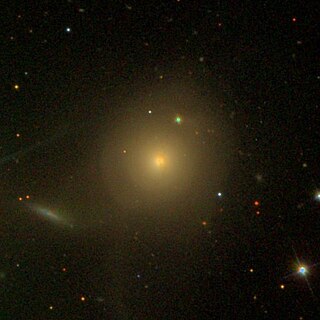
NGC 467 is an unbarred lenticular galaxy in the constellation Pisces. It was discovered on 8 October 1785 by William Herschel.
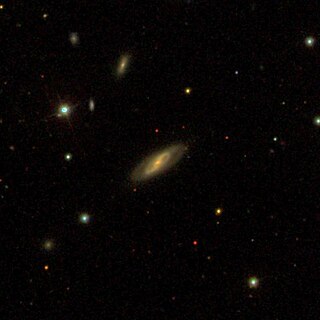
NGC 74 is a lenticular galaxy located in the Andromeda constellation. It was discovered on 7 October 1855 by Irish astronomer William Parsons.

NGC 75 is a lenticular galaxy estimated to be about 260 million light-years away in the constellation of Pisces. It was discovered by Lewis A. Swift from the USA in 1886 and its magnitude is 13.2.
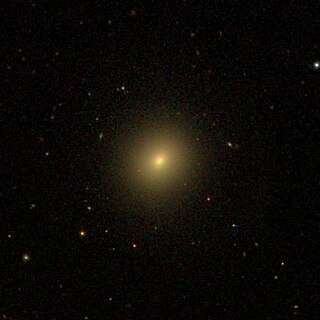
NGC 113 is an unbarred lenticular galaxy located in the constellation Cetus. It was discovered by German astronomer, Ernst Wilhelm Leberecht Tempel, on August 27, 1876.

NGC 115 is a barred spiral galaxy located in the southern constellation of Sculptor. It was discovered by the British astronomer John Herschel on September 25, 1834. The galaxy is approximately 85 million light-years from the Sun, and is about 50,000 light-years in diameter, nearly half the size of our home galaxy, the Milky Way.

NGC 116 is a possibly lost or "non-existent" object in the constellation Cetus. This object is up for debate and has been considered to possibly be PGC 1671. The NED entry for this object contains the note NGC identification is very uncertain.
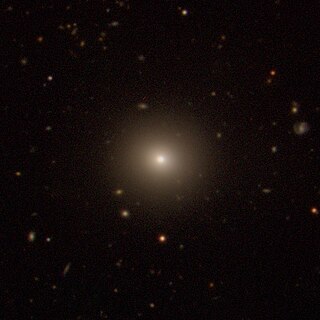
NGC 154 is an elliptical galaxy in the Cetus constellation. The galaxy was discovered by Frederick William Herschel on November 27, 1785.
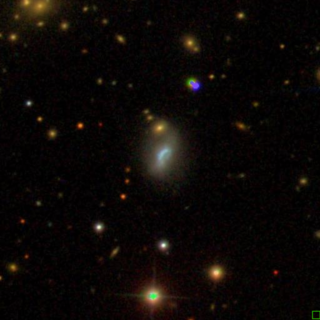
NGC 469 is a spiral galaxy in the constellation Pisces. Located approximately 167 million light-years from Earth, it was discovered by Albert Marth in 1864.

NGC 479 is a spiral galaxy in the constellation Pisces. It was discovered by German astronomer Albert Marth on October 27, 1864. It is about 240 million light-years away from Earth.
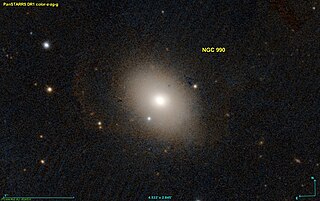
NGC 990 is an elliptical galaxy located in the constellation Aries about 153 million light-years from the Milky Way. It was discovered by the German - British astronomer William Herschel in 1786.

NGC 810 is an unbarred elliptical galaxy located in the constellation Cetus, approximately 360 million light-years from the Milky Way. It was discovered by the French astronomer Édouard Stephan in 1871.

NGC 906 is a barred spiral galaxy in the constellation Andromeda in the northern sky. It is estimated to be 215 million light years from the Milky Way and has a diameter of approximately 110,000 ly. NGC 906 was discovered on October 30, 1878 by astronomer Édouard Stephan.

NGC 531 is a barred spiral galaxy in the constellation Andromeda with a visual magnitude of 10.51. It is a distance of 65.7 Mpc from the Sun. It is a member of the Hickson Compact Group HCG 10, and is interacting with the other members of the group.

NGC 937 is a barred spiral galaxy located in the constellation Andromeda about 251 million light years from the Milky Way. It was discovered by the French astronomer Édouard Stephan on 12 December 1884.




















